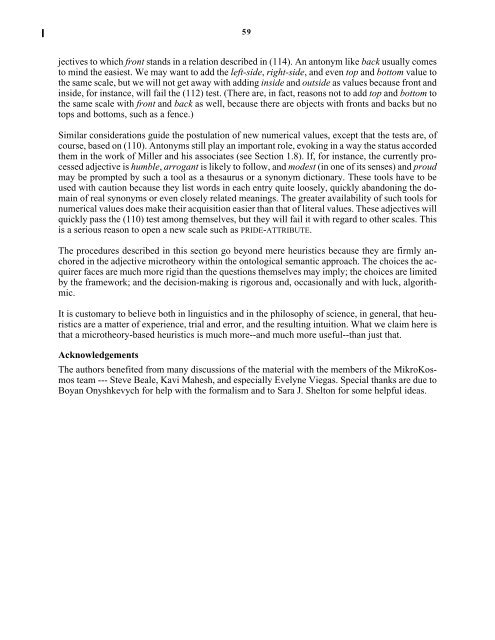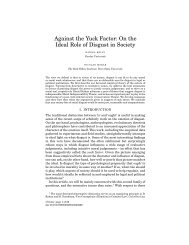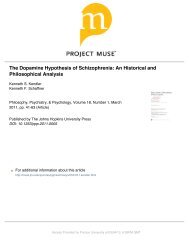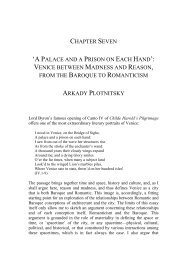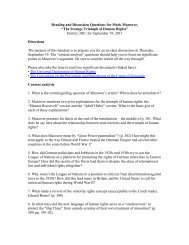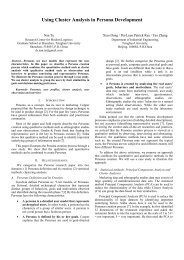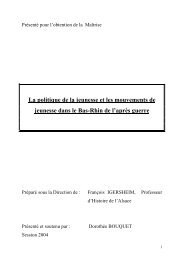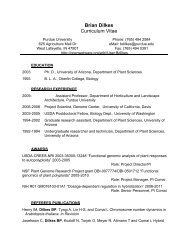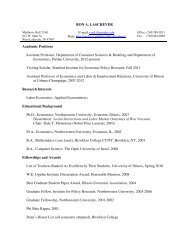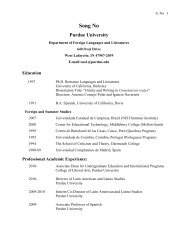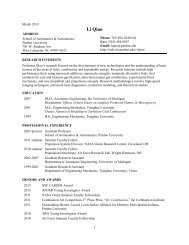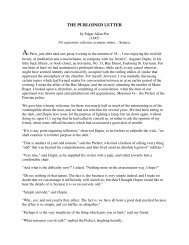Lexical Semantics of Adjectives - CiteSeerX
Lexical Semantics of Adjectives - CiteSeerX
Lexical Semantics of Adjectives - CiteSeerX
You also want an ePaper? Increase the reach of your titles
YUMPU automatically turns print PDFs into web optimized ePapers that Google loves.
59<br />
jectives to which front stands in a relation described in (114). An antonym like back usually comes<br />
to mind the easiest. We may want to add the left-side, right-side, and even top and bottom value to<br />
the same scale, but we will not get away with adding inside and outside as values because front and<br />
inside, for instance, will fail the (112) test. (There are, in fact, reasons not to add top and bottom to<br />
the same scale with front and back as well, because there are objects with fronts and backs but no<br />
tops and bottoms, such as a fence.)<br />
Similar considerations guide the postulation <strong>of</strong> new numerical values, except that the tests are, <strong>of</strong><br />
course, based on (110). Antonyms still play an important role, evoking in a way the status accorded<br />
them in the work <strong>of</strong> Miller and his associates (see Section 1.8). If, for instance, the currently processed<br />
adjective is humble, arrogant is likely to follow, and modest (in one <strong>of</strong> its senses) and proud<br />
may be prompted by such a tool as a thesaurus or a synonym dictionary. These tools have to be<br />
used with caution because they list words in each entry quite loosely, quickly abandoning the domain<br />
<strong>of</strong> real synonyms or even closely related meanings. The greater availability <strong>of</strong> such tools for<br />
numerical values does make their acquisition easier than that <strong>of</strong> literal values. These adjectives will<br />
quickly pass the (110) test among themselves, but they will fail it with regard to other scales. This<br />
is a serious reason to open a new scale such as PRIDE-ATTRIBUTE.<br />
The procedures described in this section go beyond mere heuristics because they are firmly anchored<br />
in the adjective microtheory within the ontological semantic approach. The choices the acquirer<br />
faces are much more rigid than the questions themselves may imply; the choices are limited<br />
by the framework; and the decision-making is rigorous and, occasionally and with luck, algorithmic.<br />
It is customary to believe both in linguistics and in the philosophy <strong>of</strong> science, in general, that heuristics<br />
are a matter <strong>of</strong> experience, trial and error, and the resulting intuition. What we claim here is<br />
that a microtheory-based heuristics is much more--and much more useful--than just that.<br />
Acknowledgements<br />
The authors benefited from many discussions <strong>of</strong> the material with the members <strong>of</strong> the MikroKosmos<br />
team --- Steve Beale, Kavi Mahesh, and especially Evelyne Viegas. Special thanks are due to<br />
Boyan Onyshkevych for help with the formalism and to Sara J. Shelton for some helpful ideas.


